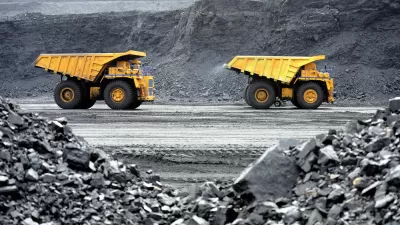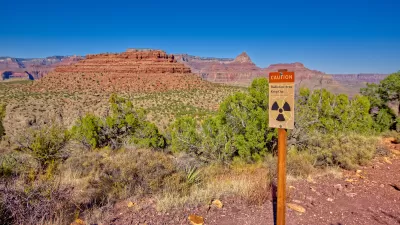The new paper, "A Roadmap for Repowering California for all Purposes with Wind, Water, and Sunlight," discusses the potential clean energy future for the Golden State by 2050.
According to a recent paper co-authored by Stanford professor Mark Jacobson, and published in Energy, California could utilize its abundant sunshine, on and off-shore winds, tides, and waves, along with geothermal heat to completely remove its reliance on fossil fuels. As John Upton writes in Pacific Standard Magazine,
“Electric cars and hydrogen fuel cell vehicles would be recharged using the renewable electricity supplies... By 2030, 80 to 85 percent of the state’s current energy supply would be replaced with clean sources. And starting in 2050, the state wouldn’t need to burn another drip of oil, hunk of coal, or molecule of natural gas—and the Diablo Canyon nuclear power plant wouldn’t be needed.”
As written in Jacobson's paper, shifting power sources would create hundreds of thousands of more jobs than it would sacrifice. In addition, the plan would save more than 10,000 lives and $100 billion in health care costs associated with pollution. Although the $1.1 trillion price tag for new renewable energy facilities seems alarming, these costs would be more than offset in the long term via climate benefits and fuel savings.
Jacobson also outlined a similar energy plan for New York State, and a broader vision for the entire world.
FULL STORY: How California Could Power Itself Using Nothing but Renewables

Maui's Vacation Rental Debate Turns Ugly
Verbal attacks, misinformation campaigns and fistfights plague a high-stakes debate to convert thousands of vacation rentals into long-term housing.

Planetizen Federal Action Tracker
A weekly monitor of how Trump’s orders and actions are impacting planners and planning in America.

San Francisco Suspends Traffic Calming Amidst Record Deaths
Citing “a challenging fiscal landscape,” the city will cease the program on the heels of 42 traffic deaths, including 24 pedestrians.

Defunct Pittsburgh Power Plant to Become Residential Tower
A decommissioned steam heat plant will be redeveloped into almost 100 affordable housing units.

Trump Prompts Restructuring of Transportation Research Board in “Unprecedented Overreach”
The TRB has eliminated more than half of its committees including those focused on climate, equity, and cities.

Amtrak Rolls Out New Orleans to Alabama “Mardi Gras” Train
The new service will operate morning and evening departures between Mobile and New Orleans.
Urban Design for Planners 1: Software Tools
This six-course series explores essential urban design concepts using open source software and equips planners with the tools they need to participate fully in the urban design process.
Planning for Universal Design
Learn the tools for implementing Universal Design in planning regulations.
Heyer Gruel & Associates PA
JM Goldson LLC
Custer County Colorado
City of Camden Redevelopment Agency
City of Astoria
Transportation Research & Education Center (TREC) at Portland State University
Jefferson Parish Government
Camden Redevelopment Agency
City of Claremont





























